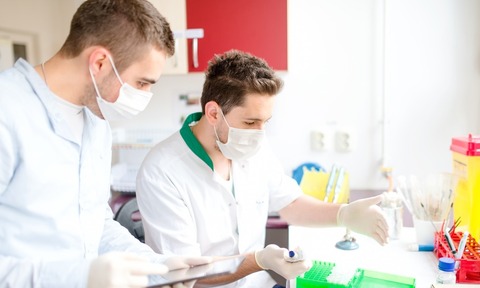The value of medical research is: 25 pence (for every pound, for ever)
17 Jan 2018

A decade-long study by Brunel University claims to have an answer to the question that has taxed academics and politicans alike: what is the economic value of medical research?
The answer, it says, is 25 pence for every pound spent – forever.
The What’s It Worth? study, which was backed by a consortium that includes The Wellcome Trust, Medical Research Council and Academy of Medical Sciences, published its results in the journal Health Research Policy and Systems.
It investigated the return on investment from musculoskeletal disease public and charity funded medical research. The results supported the findings of similar studies into cancer and cardiovascular research, said the university.
Emeritus professor Martin Buxton, former director of Brunel’s Health Economics Research Group (HERG) led the research.
He commented: “The studies we have done address the important question as to whether there is an economic return on the totality of research spending in a broad area. And for the three areas of medical research that we have studied, that clearly is the case.”
When tough decisions have to be made about where to invest public funds ... it’s vital to have robust research showing the positive returns
Dr Ian Viney, director of evaluation, Medical Research Council
Dr Ian Viney, director of evaluation at the Medical Research Council, said it would highlight the benefits of backing research can be quantified.
“When tough decisions have to be made about where to invest public funds for the best economic return and benefit to the nation, it’s vital to have robust research showing the positive returns from medical research – both through improved health and from wider private sector investment,” he said.
Calculating the impact:
The headline statistic was reached by combining two strands of figures – net monetary value of improved public health and quality of life, and the extent to which public research stimulates private investment in the commercialisation of new products and research.
“First, we calculated the average investment in UK musculoskeletal research between 1978 and 1997, and then worked with experts in the field to identify research-based treatments, their use in the NHS, and the health gain linked to these treatments – measured in Quality Adjusted Life Years or QALY,” said Buxton.
“Valuing each QALY at £25,000 allowed the team to calculate the value of the health improvements resulting from the treatments. The team then subtracted the cost to the NHS of delivering these treatments, giving us the net health gain.“
The team determined the proportion of relevant research attributed to the UK, and measured the time lag between initial research investment and impact on clinical practice – this currently stands at 16 years for musculoskeletal research.
Combining these factors resulted in the estimate that every £1 invested in UK musculoskeletal research delivered a rate of return equivalent to 7p every year, forever”.
The second strand determined the musculoskeletal research’s wider benefit to society by quantifying how much private investment was stimulated by public and charity funding.
Previous research estimates that every £1 invested in UK medical research in the past has delivered a rate of return equivalent to 15p and 18p per year, forever, for the wider benefits to the economy said Prof Buxton.
“Adding these two elements together gives an overall estimate that every £1 invested in UK musculoskeletal research delivers a return equivalent to between 22p and 25p every year, forever – a figure in line with our research into cancer and cardiovascular disease.”

